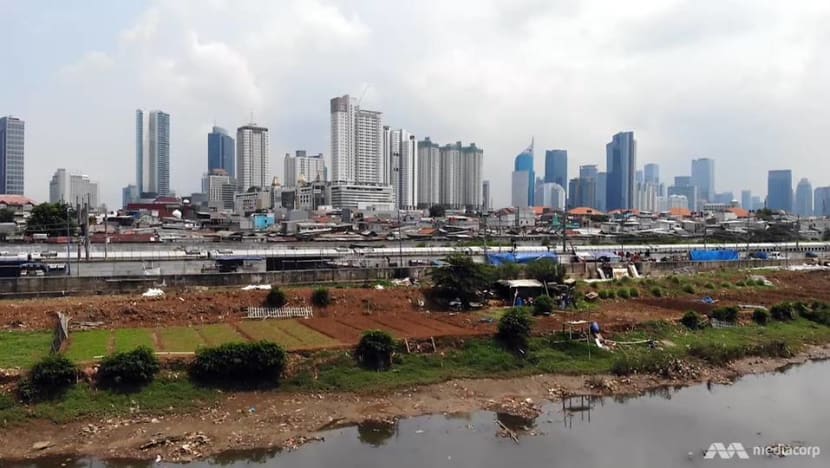Why Jakarta is the fastest sinking city in the world
Climate change, groundwater depletion and land subsidence have set alarm bells ringing in the city. Will relocating Indonesia’s capital solve the problems? The programme Insight finds out.
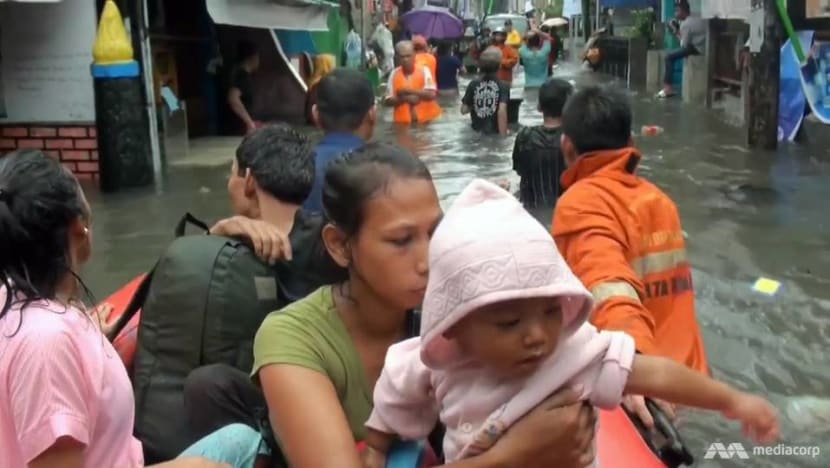
Much of North Jakarta is sinking and in need of attention to minimise the impact of tidal floods.
JAKARTA: Ramli was born on Ubi Besar island, one of the many islands scattered around the bay of Jakarta.
The old fisherman has spent much of his life there, but the place he regards as paradise on earth has slipped between the waves.
“In the late afternoon, I used to see people having fun on the beach. There are those who played football and only returned home after sunset,” the 87-year-old recalled fondly.
“It’s gone … The waves pounded and slowly washed away the sand … It’s sad.”
As with Ubi Besar, some of the other islets in this chain of more than 100 islands, called the Thousand Islands, have disappeared or are about to — owing to changing weather patterns.
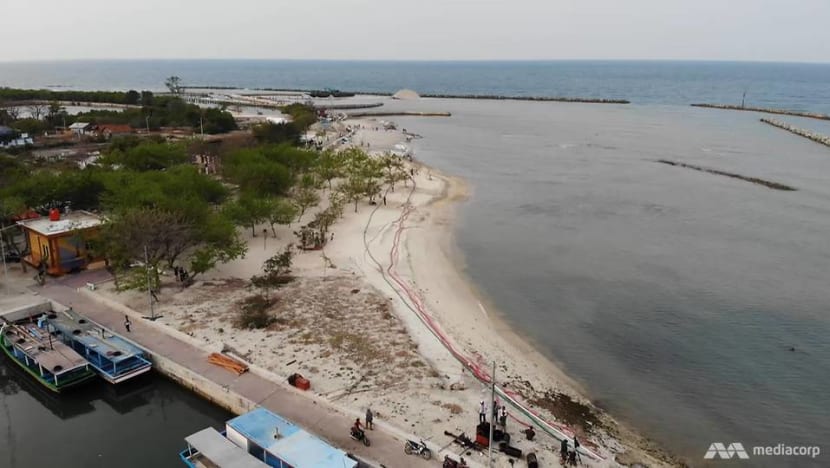
A boat ride away from these islands is the sinking megacity Jakarta, which is in danger of suffering a similar fate.
A combination of rising sea levels from global warming and land subsidence from the over-extraction of groundwater, among other reasons, has caused this coastal city to sink at an alarming rate each year, as the programme Insight discovers.
The question now is whether relocating Indonesia’s capital can safeguard the city. (Watch the episode here.)
UNDUE GROUNDWATER LOSS
Flood-prone Jakarta is the world’s fastest sinking city — as fast as 10 centimetres per year. In parts of North Jakarta, which is particularly susceptible to flooding, the ground has sunk 2.5 metres in 10 years.
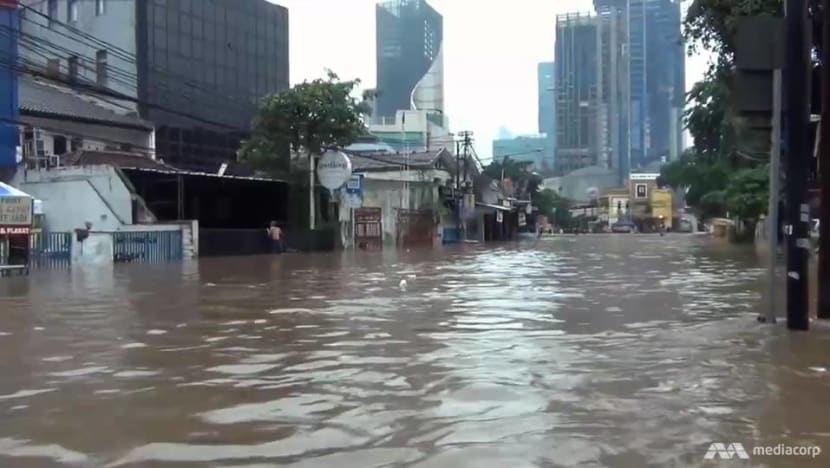
It is little wonder that the World Economic Forum has warned that it is one of the world’s fastest disappearing cities. Almost half the city now sits below sea level.
Excessive extraction of groundwater for drinking and commercial use is largely responsible for this: When water is pumped out of an underground aquifer, the land above it sinks.
Currently, 40 per cent of Jakarta’s residents lack access to piped water. Many of them then resort to carrying out their own groundwater extractions.
Isnu Sulistyawan, who heads the Ministry of Energy and Mineral Resources’ Groundwater Conservation Centre, said these illegal extractions are the easiest, cheapest way to extract water.
“Because once you drill a borehole, water can be extracted (from wells) without paying for it. The extraction of groundwater isn’t easy to monitor because the borehole may be hidden and difficult to find.”
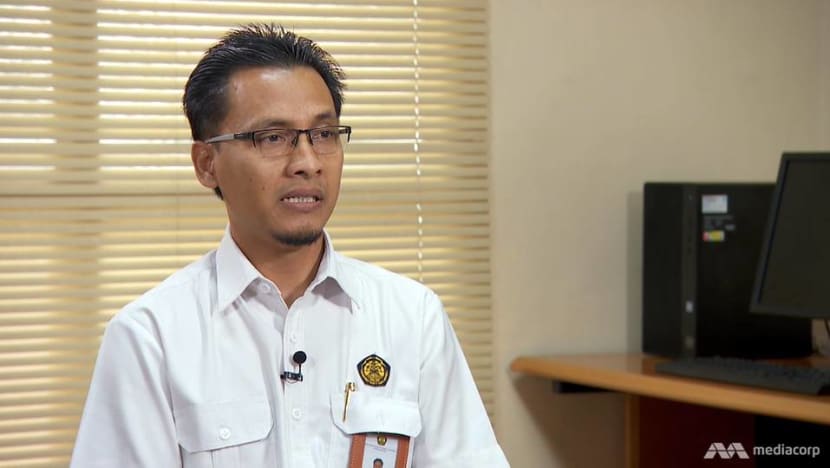
He does not deny that groundwater extraction is partly responsible for the subsidence. But he also cites other reasons causing soil to move and the land to sink, such as tectonic activity and the load of heavy buildings.
‘MASSIVE’ DEVELOPMENT
Pulung Arya Pranantya, a researcher with the Public Works and Housing Ministry, thinks it is likely that Jakarta’s new developments have had an impact on its soft soil.
“It’s very possible that the buildings today have a greater weight than they did in the past,” he said. “And it’s very possible that this weight has led to faster land subsidence.”
Much of North Jakarta, for example, was originally swampland but has been converted into housing estates, shopping centres and factories.
Watch: Why Jakarta is sinking, and what’s being done to stop it (4:29)
Every corner of the city, in fact, is being filled with residential buildings or shopping centres as the demand for residential and commercial spaces keeps rising. A growing number of skyscrapers dot the skyline.
Tory Damantoro, chairman of the Jakarta Chapter, Indonesia Transportation Society, agrees that the city’s infrastructure development by the government seems to have been “’massive” in the last five years.
“A lot’s been built. There are subways, roads, ports, airport upgrades and so on,” he said. “It’s an attempt to play catch up because in the past 15 years, not much had been done.”
In the Muara Baru neighbourhood, one of the fast sinking areas in North Jakarta, water trader Yulianti’s shop is in front of a wall built to protect her business from flooding.

But the wall offers her little security; during the last flood, the water came up to 2m high. “The corners of the wall broke,” she said. “I slept until my foam mattress began to float because of the rising water.”
READ: Thousands in shelters as Indonesia flood death toll hits 53
A dyke was built to regulate water levels here, said Pulung, but because of the land subsidence, the dyke has had to be raised by about 20 cm a year.
BIG MOVE, LITTLE GAIN?
Rujak Centre for Urban Studies executive director Elisa Sutanudjaja believes that Jakarta’s subsidence rate has hit a plateau, however — compared with the “severe sinking” up till 2011 — and that the ground is becoming “a lot more compact”.
A mega project called the National Capital Integrated Coastal Development programme is also proceeding as a measure to protect the city from the onslaught of seawater. It includes the construction of a giant seawall.
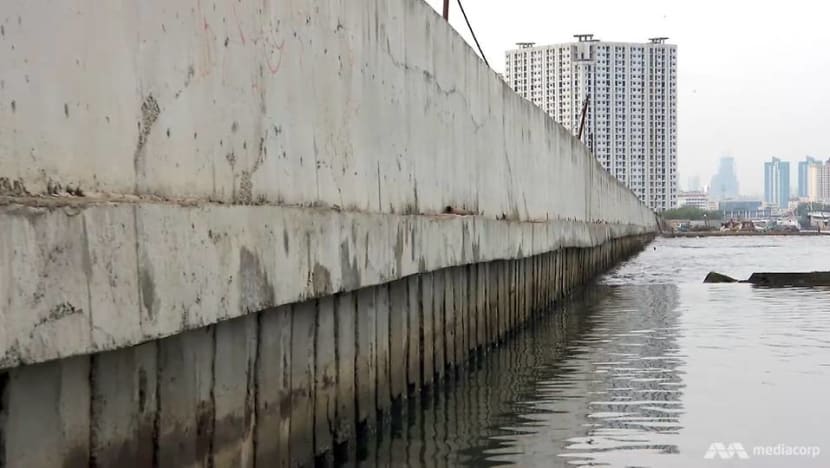
And to help ease the burden on Jakarta, Indonesian President Joko Widodo announced in August that the country’s capital will move from the heart of Java island to East Kalimantan, on the forest island of Borneo.
“We can’t let the pressure on Jakarta and Java increase further — the problems faced by Jakarta in terms of population density, traffic jams, air pollution and rising water levels that we need to handle,” he said.
READ: Indonesian president announces site of new capital on Borneo island
READ: Indonesia picks McKinsey to help plan capital in the forest
However, some of Jakarta’s issues, especially rising water levels and land subsidence triggered by climate change and rapid development, will take years to overcome.
In a CNA commentary, researcher Rendy Diningrat at The SMERU Research Institute said the move also seemed like “an attempt to escape the chronic problems in Jakarta that need to be addressed immediately”, like water shortages, floods and traffic congestion.
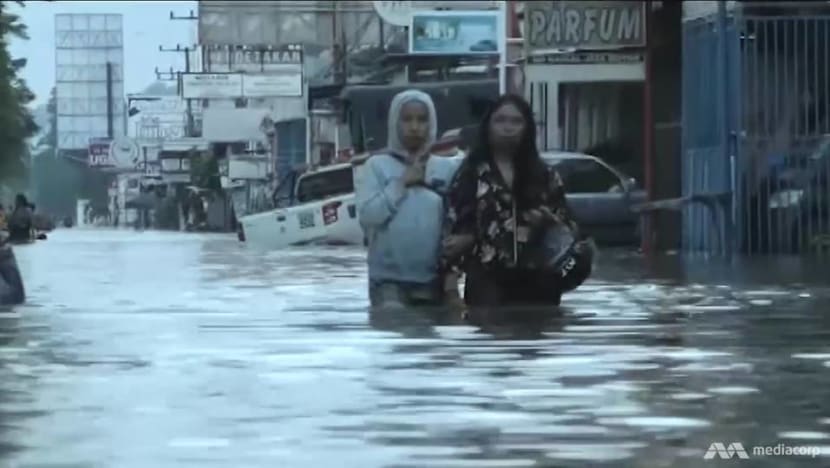
Rudy Prawiradinata, deputy minister for regional development) at the Ministry of National Development Planning, has given the assurance, however, that the central government will continue to assist Jakarta in tackling its problems, including the land subsidence issue.
READ: Residents fear Jakarta’s sinking problem will be sidelined with Indonesia’s capital move
“There are several projects which are in the pipeline. We’ll continue to finance them or help Jakarta to seek loans from other countries,” he told CNA recently.
“Moving the capital will alleviate some of the problems Jakarta is facing. Fewer people will mean less traffic and more access to clean water.”
Watch the episode here. The programme Insight is telecast on Thursdays at 9pm.
